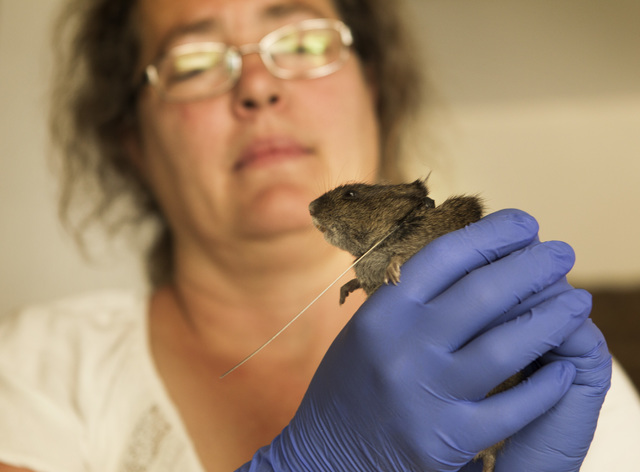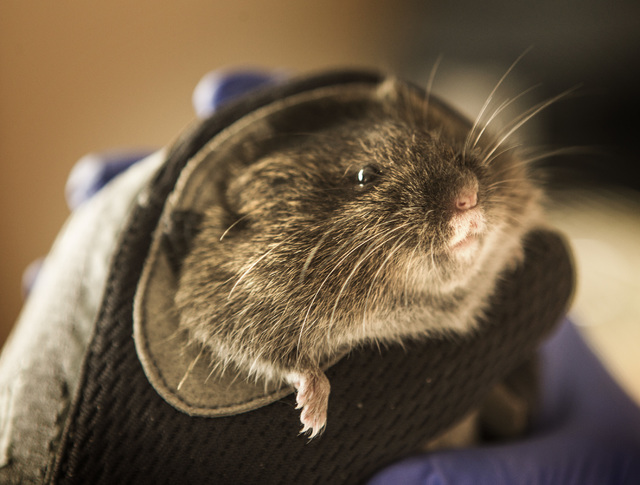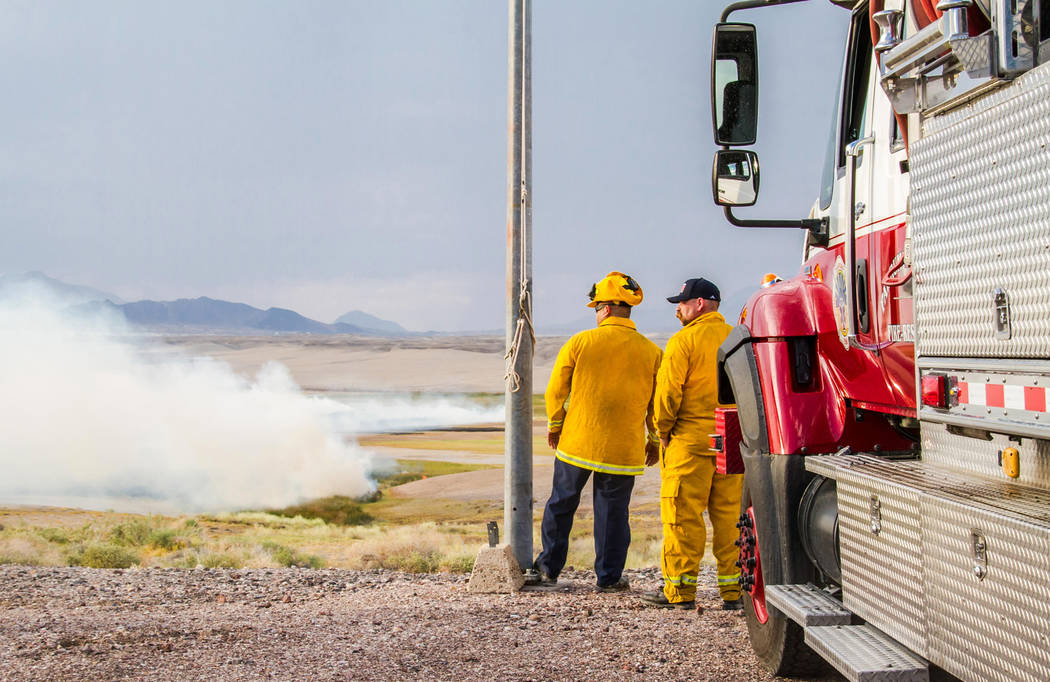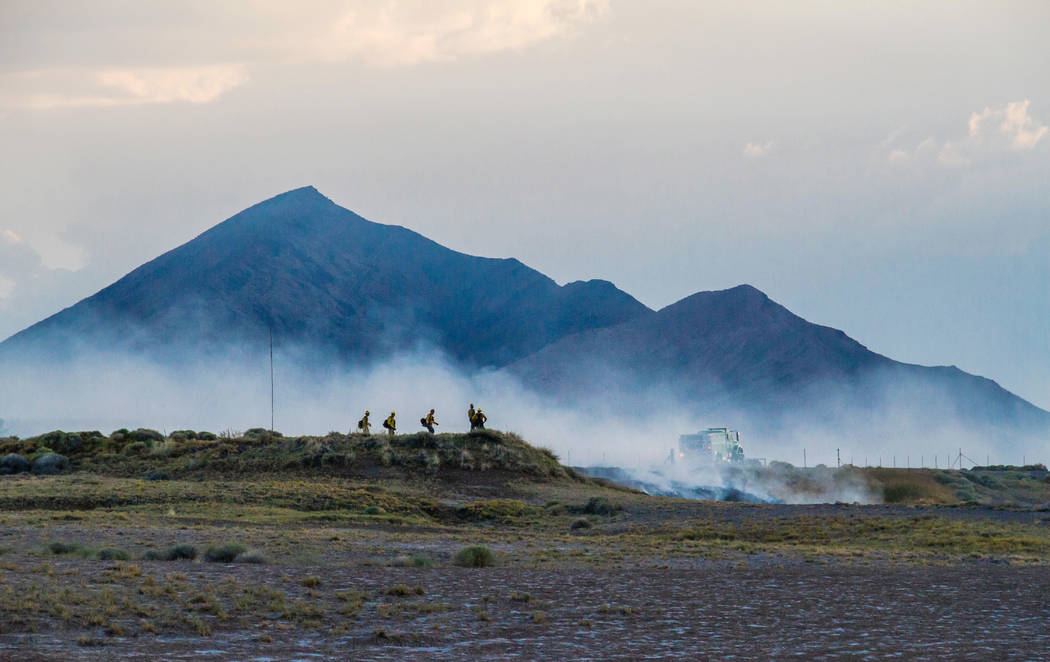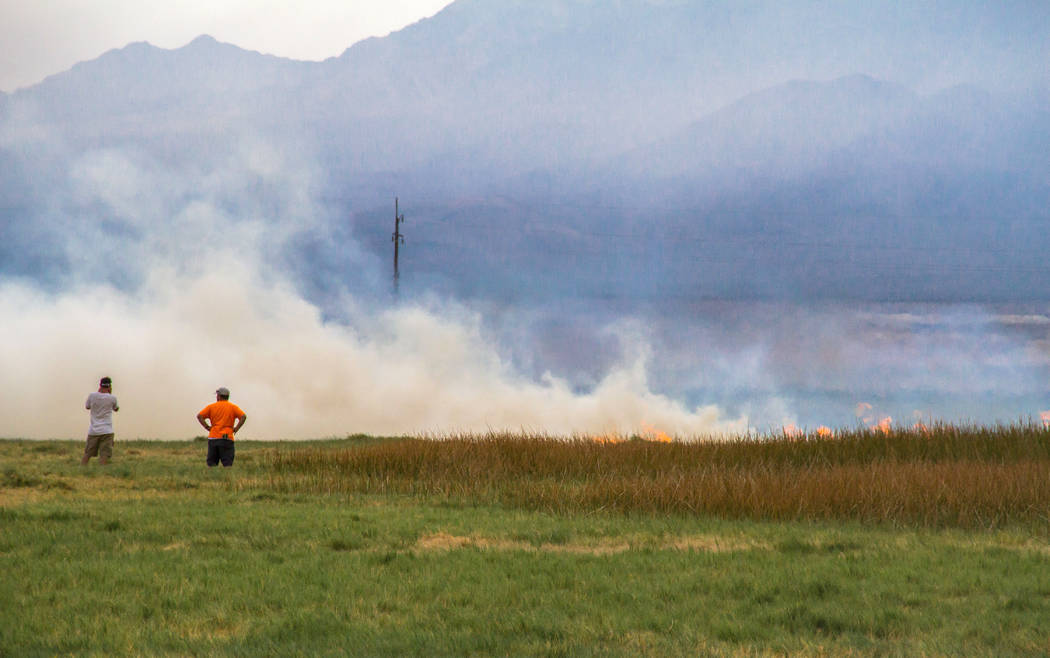Researchers worry for vole after wildfire burns habitat
Researchers are assessing the damage after a wildfire near the California-Nevada border burned through critical habitat for one of North America’s most endangered rodents.
Monday’s lightning-sparked blaze near Tecopa, California, 85 miles southwest of Las Vegas, scorched 27 acres of spring-fed wetlands before firefighters could extinguish the flames.
Janet Foley, a veterinary professor at the University of California, Davis, said the fire burned 10 to 20 percent of the remaining natural habitat for the Amargosa vole, a small, brown critter found nowhere else in the wild.
“It’s not good,” Foley said. “It burned two full marshes with lots of voles in them. Our hope is some of them escaped to another habitat patch.”
She said a member of her research team is headed to Tecopa to examine the burned area and check the neighboring marshes for any recent arrivals. 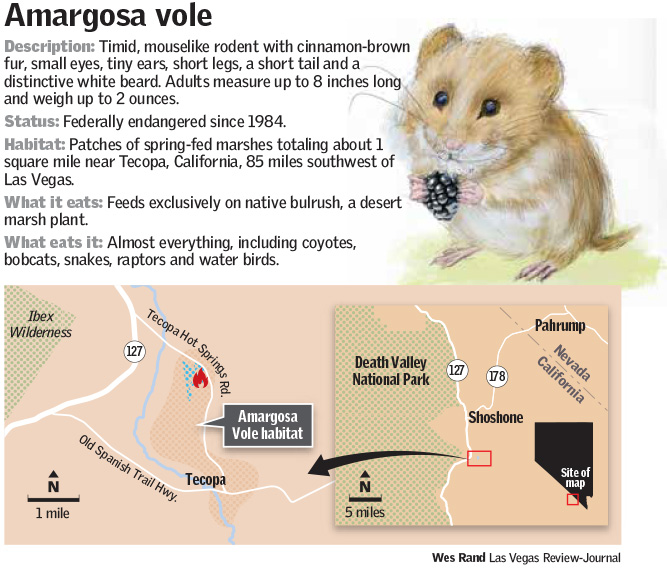
Foley is co-leader of the “vole team,” a species recovery group that includes the U.S. Fish and Wildlife Service, Bureau of Land Management, U.S. Geological Survey, California Department of Fish and Wildlife, UC Davis, the University of California, Berkeley, and the Amargosa Conservancy.
The mouse-like rodent with the round body and distinctive white beard was first described by naturalists in the late 1800s. Destruction of its native marshes by early settlers just east of Death Valley led scientists to declare the animal extinct in the early 1900s.
The species was rediscovered in the late 1970s and listed as endangered by the state of California and the federal government in the early 1980s.
There are thought to be only a few hundred voles left in the wild. “It’s definitely fewer than 500,” Foley said.
No place to go
Efforts to save the species acquired new urgency in recent years, as drought and human disturbance led to a dramatic decline in the rodent’s core habitat around Tecopa. That prompted an emergency collection of 20 juvenile voles in July 2014 amid concern the animals could be gone forever in as little as a year.
Those voles have been breeding at Foley’s lab at UC Davis ever since, producing a stable captive population of around 100 animals — enough to allow the team to conduct a few experimental releases in the wild.
Foley and company are also trying to restore the bulrush marshes that used to grow in Shoshone, California, about seven miles to the north, so voles can be reintroduced to that area as early as next year.
As it stands now, the entire species is confined to an area that could be destroyed by a single large wildfire or a sudden loss of water in the marshes around Tecopa, Foley said.
“That’s why the Shoshone restoration is so crazy important,” she said. “There’s not any other place for them to go.”
Foley said Monday’s fire was reported at about 3:30 p.m. by a county road worker who saw the bolt of lightning and the flames that immediately followed.
Firefighters from Tecopa and Pahrump quickly responded and kept the fire away from homes at the edge of Tecopa.
A U.S. Forest Service crew from San Bernardino, California, and BLM crews from Las Vegas and California halted the spread of the blaze by about 9 p.m. Monday. BLM field specialist James Gannon, who helped fight the fire, said they had it fully contained by just before 6 p.m. Tuesday.
“It’s scary,” Foley said. “It could have been so much worse.”
Contact Henry Brean at hbrean@reviewjournal.com or 702-383-0350. Follow @RefriedBrean on Twitter.



